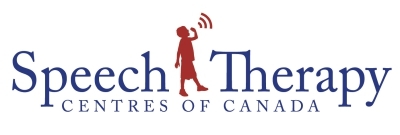AUTISM SPECTRUM DISORDER
Speech Therapy for ChildrenUnderstanding Autism Spectrum Disorder (ASD)
What Is Autism Spectrum Disorder?
Autism Spectrum Disorder (ASD) is a developmental condition that affects communication, behavior, and social interaction. It is characterized by a wide range of symptoms and abilities, which is why it’s called a “spectrum.” Here are some key points about ASD:
Signs and Symptoms:
- Social Challenges: Difficulty with social interactions, making eye contact, and understanding social cues.
- Communication Difficulties: Delayed language development, repetitive speech, and challenges in expressing needs.
- Repetitive Behaviors: Engaging in repetitive movements or fixations on specific interests.
- Sensory Sensitivities: Heightened sensitivity to lights, sounds, textures, or other sensory stimuli.
- Rigidity: A preference for routines and resistance to change.
- Varied Abilities: ASD varies widely, from individuals with severe impairments to those with high-functioning abilities.
Signs of Autism
In Toddlers:
-
- Delayed speech or lack of babbling.
- Limited eye contact.
- Difficulty playing with peers.
- Repetitive behaviors (e.g., flapping hands).
- Fixation on specific objects or topics.
In Adults:
- Challenges in maintaining relationships.
- Difficulty understanding social cues.
- Rigid routines.
- Special interests.
- Sensory sensitivities.
Diagnosis and Early Intervention
-
- Diagnosis: ASD is typically diagnosed through behavioral observations, developmental assessments, and parental interviews.
- Early Intervention: Starting therapy early (such as speech-language therapy) can significantly improve outcomes.
Remember that each person with ASD is unique, and their strengths and challenges vary. Early intervention and understanding can make a significant difference in their quality of life. If you suspect your child or someone you know may have ASD, seek professional evaluation and support.
How Can Speech-Language Pathologists (S-LPs) and Communication Disorder Assistants (CDAs) Assist Children and Youth on the Autism Spectrum?
- Communication Strategies:
-
- Teaching Communication: SLPs work closely with children to develop effective communication skills. They focus on expressive language, vocabulary expansion, and understanding social cues.
- Alternative Communication Methods: For non-verbal or minimally verbal children, SLPs introduce alternative methods such as picture cards, communication apps, or sign language.
-
- Social Interaction:
-
- Play-Based Interventions: SLPs use play and interactive activities to improve social skills. Children learn how to engage with peers, take turns, and understand social norms.
- Eye Contact and Joint Attention: SLPs guide children in making eye contact and sharing attention during conversations.
-
- Speech Clarity and Fluency:
-
- Articulation and Pronunciation: SLPs address speech sound errors and help children articulate words clearly.
- Fluency Techniques: For children with repetitive speech patterns, SLPs provide strategies to enhance fluency.
-
- Pragmatic Language:
-
- Understanding Context: SLPs teach children how to adjust their language based on the situation. This includes using appropriate greetings, asking questions, and maintaining conversational flow.
-
- Behavioral Support:
-
- Reducing Frustration: SLPs help children express their needs and wants effectively, reducing frustration and challenging behaviors.
- Self-Regulation: SLPs work on self-regulation skills, helping children manage emotions during communication.
-
- Individualized Goals:
-
- Tailored Plans: SLPs create personalized therapy plans based on each child’s strengths, challenges, and developmental level.
- Collaboration: SLPs collaborate with parents, teachers, and other professionals to ensure consistent support.
-
Remember that early intervention is crucial. SLPs play a vital role in helping children with ASD reach their communication potential and improve their overall quality of life.
DO YOU HAVE OAP FUNDING?
ABOUT THE ONTARIO AUTISM PROGRAM (OAP)
The Ontario Autism Program (OAP) offers support to families of children and youth on the autism spectrum. Children and youth who have been diagnosed with autism spectrum disorder (ASD) by a qualified professional are eligible for the program. Children receive services and supports until the age of 18.
ONTARIO AUTISM PROGRAM (OAP) ELIGIBILITY
To register for the Ontario Autism Program, your child must:
- be under age 18
- currently live in Ontario
- have a written diagnosis of autism from a qualified professional
For more information about the Ontario Autism Program, please visit: https://www.ontario.ca/page/ontario-autism-program
Proudly serving the following locations through our Richmond Hill Ontario office:
Bradford | Vaughan | Maple | Aurora | Woodbridge | Oak Ridges | Stouffville | Markham | North York
Proudly serving the following locations through our Brampton Ontario office:
Mississauga | Oakville | Milton | Etobicoke | Georgetown | Brampton | Burlington
905-886-5941
Aurora | Newmarket | Markham | Thornhill | GTA | Mississauga | Brampton | Burlington | Ajax | Oshawa | Pickering | Ottawa
